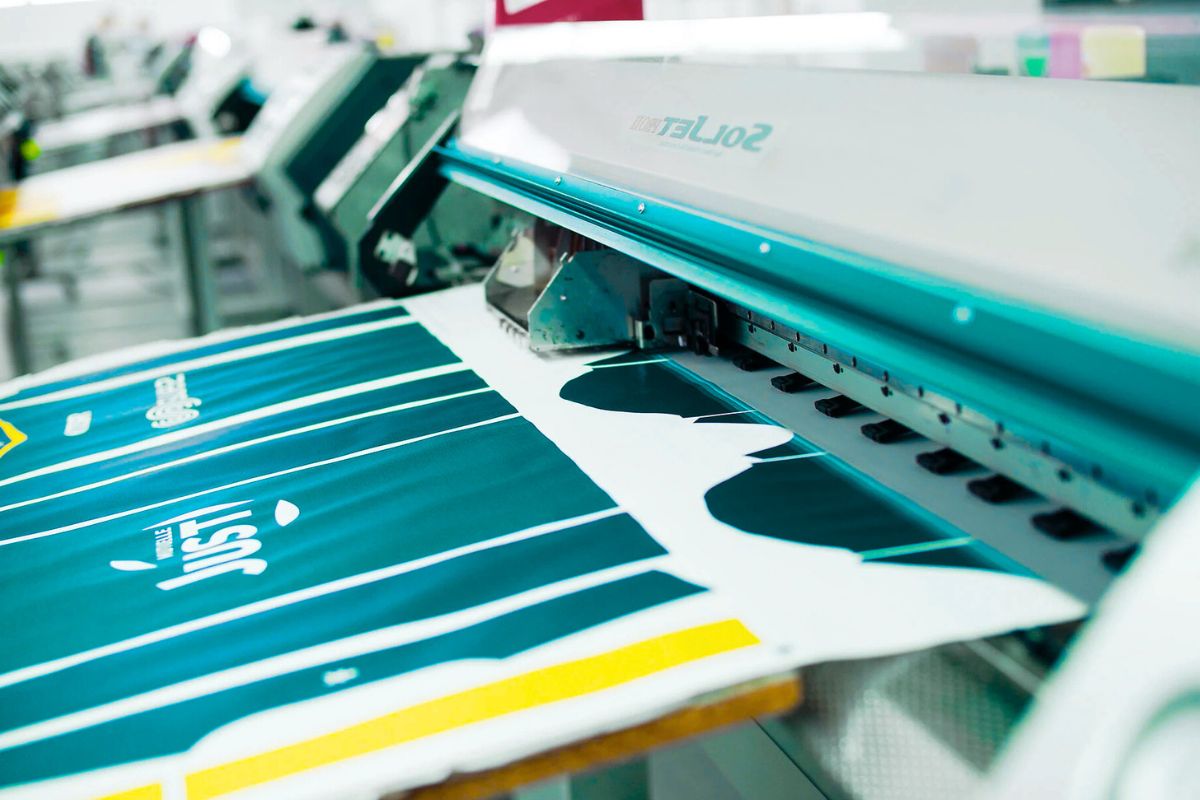Sublimation printers are specialized devices that enable vibrant and long-lasting printing on various materials.
These printers use heat to turn dye-based ink into gas, allowing it to penetrate surfaces like polyester fabric and polymer-coated items.
This process ensures that the designs become an integral part of the material, resulting in high-quality and durable prints that won’t fade over time.
Table of contents
- Understanding Sublimation Printing
- Sublimation Printers Explained
- Choosing the Right Sublimation Printer
- Sublimation Ink and Media
- Sublimation Printing Applications
- Operating and Maintaining a Sublimation Printer
- Sublimation Printing for Businesses
- Advancements in Sublimation Printing Technology
- Comparison with Other Printing Methods
- Conclusion
- Frequently Asked Questions
- What are the typical uses for a sublimation printer?
- How do you convert a regular printer to a sublimation printer?
- Can you use a sublimation printer to print on t-shirts, and how is it done?
- What makes a sublimation printer different from an inkjet printer?
- What should beginners look for when choosing a sublimation printer?
- Why is sublimation printing preferred for certain applications over other methods?
Many people turn to sublimation printing for custom apparel, home decor, and promotional products. It’s a popular choice for those looking to create unique items or start a Print on Demand business.
Understanding how a sublimation printer works can open up new possibilities for your crafting or business endeavors.
Whether you’re an experienced crafter or just starting, learning about sublimation printing will equip you with the knowledge to make informed choices.
You’ll discover what makes sublimation printers different and how you can use them to bring your creative ideas to life.
Understanding Sublimation Printing
Sublimation printing is a unique method that uses heat to transfer designs onto materials. This technique ensures vibrant, long-lasting prints suitable for various products. Below are the essential aspects of sublimation printing to help you understand its functionality.
The Basics of Sublimation Printing
Sublimation printing, often referred to as dye sublimation, involves turning solid dye into gas without going through a liquid stage. This process requires special sublimation ink and sublimation paper. The dye bonds effectively with synthetic materials, especially polyester.
As the heat activates the dye, it penetrates the fabric, creating a smooth print that resists cracking and fading. This makes sublimation popular for items like T-shirts, mugs, and banners.
It’s important to note that sublimation works best on light-colored, polyester-based items, as the ink cannot transfer effectively onto dark or natural fabrics.
The Sublimation Printing Process
The sublimation printing process consists of several steps.
First, you print a design on special sublimation paper using sublimation ink. This paper is crucial for achieving the right results.
Next, you place the printed paper on the product you want to customize.
Using a heat press, you apply heat and pressure to the paper and item. The temperature usually ranges between 350°F to 400°F.
During this time, the heat activates the dye, turning it into gas. The gas then permeates the material, resulting in a high-quality design.
This process is straightforward, making it suitable for beginners. With practice, you can master various techniques and create vibrant prints suited to your needs.
Sublimation Printers Explained
| Function | Best Purpose |
|---|---|
| Heat Transfer Printing | Printing designs on fabrics, mugs, and phone cases |
| High-Quality Color Output | Producing vibrant, long-lasting prints |
| Ink Infusion into Material | Ensuring durable, fade-resistant prints |
| Customization & Personalization | Ideal for custom T-shirts, gifts, and branding |
| Bulk Printing Capabilities | Efficient for print-on-demand and business use |
| Works on Polyester & Coated Surfaces | Best for synthetic fabrics and coated hard surfaces |
| No Peeling or Cracking | Ensures seamless and professional-quality prints |
| Low Maintenance | Requires less upkeep compared to traditional printers |
Sublimation printers are specialized devices designed for printing high-quality images on various materials. They use a unique process that allows the ink to become gas and bond with the fabric or surface, resulting in vibrant and long-lasting designs. This section covers the definition, types, and components of sublimation printers.
What Is a Sublimation Printer?
A sublimation printer uses a process called dye sublimation to transfer ink onto materials. Unlike traditional inkjet printers, which apply ink to the surface, sublimation printers convert ink into gas through heat. This gas penetrates the material’s fibers, creating a strong bond that makes the print durable and resistant to fading.
Commonly used for custom designs on fabrics, mugs, and other items, sublimation printers excel at producing detailed and colorful images. Brands like Epson and Sawgrass are well-known in this field.
The Epson EcoTank series and Sawgrass SG500 model are popular choices among hobbyists and professionals for their ease of use and high-quality output.
Types of Sublimation Printers
There are two main types of sublimation printers: desktop and large-format.
Desktop Sublimation Printers: These are compact and ideal for small-scale projects, such as custom mugs, shirts, and small fabric items. Models like the Epson SureColor F170 are popular for home use.
Large-Format Sublimation Printers: Designed for professionals or businesses, these printers handle larger items like banners and bulk apparel. They can print on multiple materials and typically have higher production speeds.
Selecting the right type depends on your project needs and volume.
Sublimation Printer Components
Key components of a sublimation printer include:
Sublimation Ink: This specialized ink turns into gas under heat, allowing it to bond with materials. It is essential for achieving the desired vibrant prints.
Heat Source: A heat press or oven is necessary to apply heat to the ink, converting it into a gas.
Transfer Paper: This paper holds the printed design before it transfers to the final surface.
Sublimation-Ready Surface: Compatible materials, often polyester or coated items, are crucial for successful sublimation printing.Understanding these components helps you choose the right equipment for your projects.
Choosing the Right Sublimation Printer
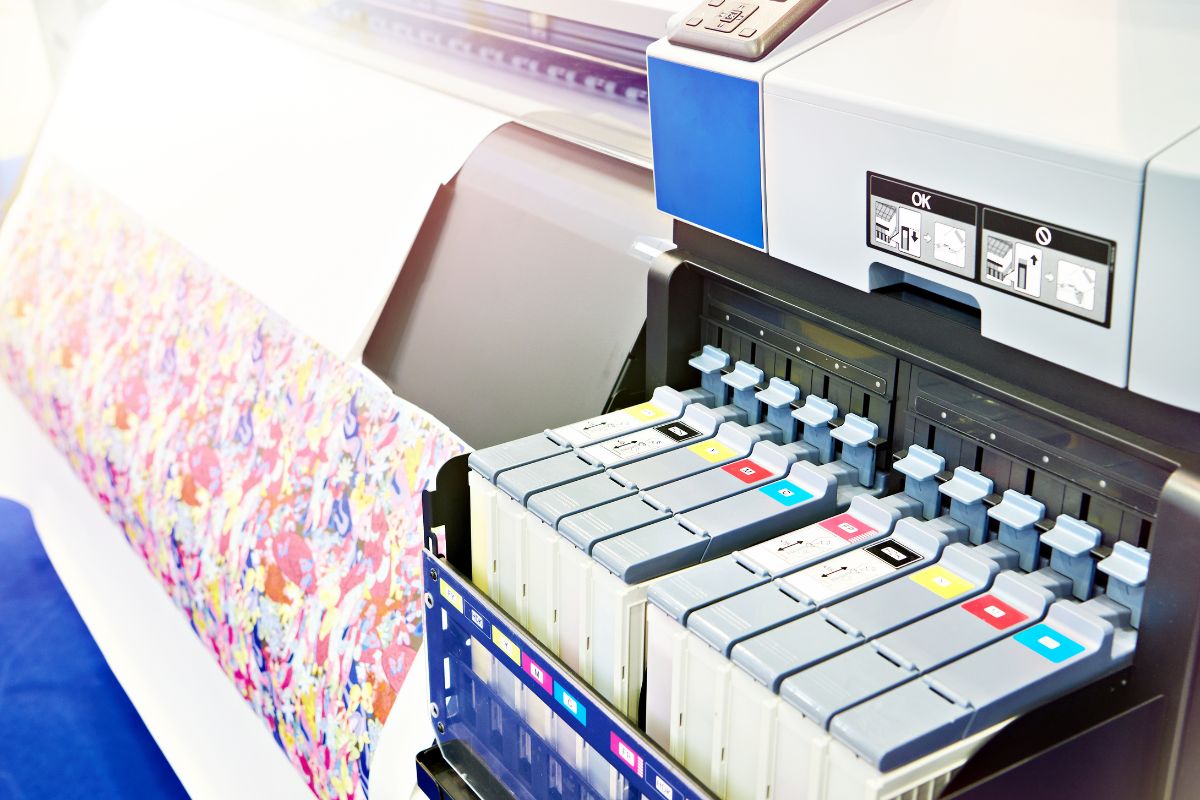
Selecting the right sublimation printer is crucial for achieving high-quality results in your projects. Consider various factors that impact print quality, size compatibility, and specific requirements for your sublimation needs.
Factors to Consider When Selecting a Sublimation Printer
When choosing a sublimation printer, start by looking at the type of printer that suits your needs. You can select between purpose-built sublimation printers, like Sawgrass printers, and converted inkjet models, such as Epson EcoTank printers.
Key considerations include:
- Print Speed: Check the printer’s output speed, especially if you plan to print in bulk.
- Ink Compatibility: Ensure the printer works with sublimation inks. Regular ink won’t yield good results.
- Connection Options: Look for USB cable options for easy connectivity to your computer.
Evaluating Print Quality and Resolution
Print quality and resolution are critical for successful sublimation printing. Higher resolution typically leads to more detailed images. Most sublimation printers offer resolutions ranging from 300 to 1200 DPI (dots per inch).
To gauge print quality, consider:
- Color Accuracy: Look for printers that provide vibrant colors and sharp details.
- Testing: Some printers allow you to print test images to check color and alignment.
- Samples: Before purchasing, ask for sample prints to evaluate quality firsthand.
Understanding Size and Compatibility
Size matters when choosing a sublimation printer. Think about the dimensions of your projects and the print sizes you need. This will inform your choice of printer.
Other compatibility factors include:
- Printer Size: Consider the physical footprint of the printer to ensure it fits your workspace.
- Media Type: Check the maximum media size your printer can handle. Models can vary from small formats to larger ones suited for larger projects.
- Brand Compatibility: Ensure your printer is compatible with your current setup, especially if using specific brands of transfer paper or sublimation inks.
Sublimation Ink and Media
| Best Surfaces for Sublimation Printing | Why It’s Ideal | Examples |
|---|---|---|
| Polyester Fabric (at least 65%) | Best for T-shirts, hoodies, and activewear | Polyester T-shirts, jerseys |
| Sublimation-Coated Ceramic | Long-lasting, high-quality print | Mugs, plates, tiles |
| Sublimation-Coated Aluminum | Glossy finish, ideal for signage and decor | Photo panels, license plates |
| Sublimation-Coated MDF Wood | Good for personalized gifts and decor | Coasters, plaques |
| Sublimation-Coated Glass | Vibrant prints with a glossy effect | Photo frames, awards |
| Polyester-Coated Canvas | Durable, high-quality art prints | Custom canvas prints |
| Sublimation Blanks (Keychains, Mousepads, Phone Cases, etc.) | Great for small custom items | Phone cases, mousepads |
In sublimation printing, the choice of ink and media plays a critical role in achieving high-quality final prints. You need to understand the types of sublimation ink available, how to select the best transfer paper, and how the media you choose affects your prints.
Types of Sublimation Ink
Sublimation ink is specifically designed for the printing process, converting into gas when heated. There are mainly two types:
- Dye Sublimation Inks: These are the most common and are known for their vibrant color output. They bond well with polyester and special coated materials.
- Eco-Solvent Inks: These inks are less common in sublimation but can work on vinyl materials. They are more environmentally friendly but offer different performance qualities.
Make sure to choose an ink compatible with your printer. Quality matters, as cheaper inks may lead to dull colors or shorter-lasting prints.
Choosing the Right Transfer Paper
Selecting the right transfer paper is essential for successful sublimation printing. Here are key points to consider:
- Type of Material: Use sublimation transfer paper, which is designed to hold and release the ink effectively.
- Weight: Heavier papers often provide better results because they have improved ink absorption, helping achieve vibrant prints.
- Finish: Look for papers with a smooth finish, as they help produce clearer and more detailed images.
Always test different brands to see which yields the best results for your specific print jobs.
Effect of Media on Final Prints
The media used in sublimation printing significantly impacts the quality and durability of your final prints. Here’s how:
- Material Type: Polyester fabrics work best, as sublimation dye bonds with the fibers. Blends with cotton can yield less vivid results.
- Coated Surfaces: If you’re printing on hard surfaces, ensure they are coated specifically for sublimation. This helps the dye bond effectively, resulting in longer-lasting designs.
- Color and Texture: The base color of the media affects the final appearance. Light-colored or white media allows the true colors of the dye to shine through.
By selecting the right ink and media, you can achieve stunning, high-quality sublimation prints.
Sublimation Printing Applications
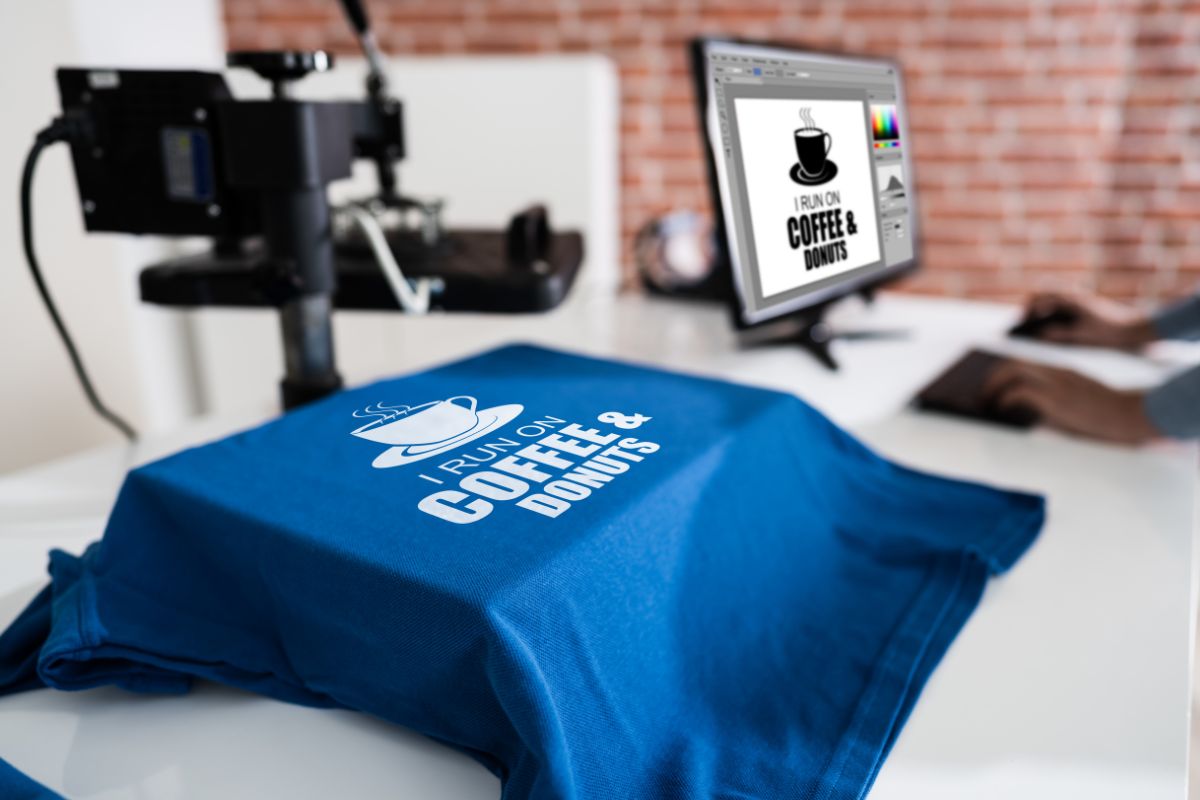
Sublimation printing offers a wide range of applications across various industries. You can use this method to create vibrant, durable designs on different products, making it perfect for custom items.
Textiles and Apparel
Sublimation printing excels in the textiles and apparel industry. It works best on polyester fabric, allowing for high-quality, detailed prints. You can create custom jerseys, sportswear, and fashion items that are vibrant and long-lasting.
For instance, you might personalize T-shirts, leggings, and hats with intricate designs.
Using sublimation blanks is essential here. These are specialized items made for this type of printing. They ensure that the dye bonds effectively with the fabric, resulting in a permanent design that won’t fade or peel, even after many washes.
Home Decor and Furnishings
In home decor, sublimation printing provides endless possibilities for customization. You can decorate items like pillows, blankets, and curtains. By using sublimation techniques, you can incorporate personal images or unique patterns directly into these products.
This process ensures that the prints are soft to the touch and blend seamlessly with the fabric. You might explore options like custom pillowcases or personalized blankets that add a touch of style to any room.
This method keeps your designs vibrant over time with no signs of cracking or fading.
Promotional Products and Business Solutions
Sublimation printing is an effective tool for business solutions and promotional products. You can create custom items that promote your brand, such as mugs, keychains, and promotional apparel. The process allows for intricate designs that ensure your products stand out.
Customization is key in this area. You can create business uniforms or unique giveaways tailored to your brand. Items like lanyards or tote bags made from sublimation blanks not only serve a purpose but also reflect your brand identity clearly.
This can enhance customer engagement and leave a lasting impression.
Operating and Maintaining a Sublimation Printer
| Task | Best Practices |
|---|---|
| Printer Setup | Use the recommended sublimation ink and paper. Connect to a stable power source. |
| Color Management | Install ICC profiles for accurate color output. Adjust settings in printing software. |
| Paper Handling | Use sublimation paper specifically designed for your printer model. Store in a dry place. |
| Regular Cleaning | Clean printheads and rollers weekly to prevent clogs. Use lint-free cloth and cleaning solution. |
| Ink Cartridge Maintenance | Shake ink bottles gently before refilling. Use high-quality sublimation ink. |
| Preventing Ink Clogs | Print a test page every few days if the printer is unused to keep ink flowing. |
| Temperature & Humidity Control | Keep in a controlled environment (50-70°F, 40-60% humidity) to prevent ink drying. |
| Heat Press Alignment | Ensure even pressure and correct temperature for transferring images onto surfaces. |
| Firmware & Software Updates | Regularly check for updates to keep the printer functioning optimally. |
| Storage & Shutdown | Turn off properly when not in use. Cover the printer to prevent dust accumulation. |
To ensure your sublimation printer performs well, both setup and routine maintenance are key.
Properly preparing your printer and conducting tests will help you achieve the best results.
Setting Up Your Sublimation Printer
When setting up your sublimation printer, start by placing it on a stable surface. This helps prevent vibrations that can affect print quality.
Connect it to your computer or network and install the necessary drivers. Follow the manufacturer’s instructions closely for easy setup.
Load your sublimation paper and ink properly. Make sure to select the right media settings in your printer’s software.
Check for any firmware updates to keep your printer working efficiently. It’s essential to handle dye-sublimation ink with care, as spills can lead to unwanted messes.
Routine Maintenance and Troubleshooting
Regular maintenance is crucial for peak performance. Clean the print head frequently to avoid clogs that can ruin prints.
Use a soft cloth to wipe down the exterior and interior components of the printer.
Monitor ink levels regularly. Replace cartridges as needed to prevent dry printing, which can lead to faint colors.
If prints aren’t coming out as intended, run a nozzle check to identify issues. This simple step can save you time and materials.
Keep your printer in a cool, dry place away from direct sunlight. Ambient temperature affects the printing process.
If you experience repeated problems, consult the troubleshooting guide or reach out to customer support.
Conducting a Sublimation Test
Before starting a big project, conduct a sublimation test to check color accuracy.
Print your design on a sample piece of sublimation paper. Compare it to your screen to see if the colors match.
Make adjustments as needed in the software. Factors like temperature and pressure during transfer can also influence the final product.
After testing, analyze the print quality and make notes to refine your approach.
This test ensures your prints are vibrant and up to the expected standard before committing to larger projects.
Sublimation Printing for Businesses
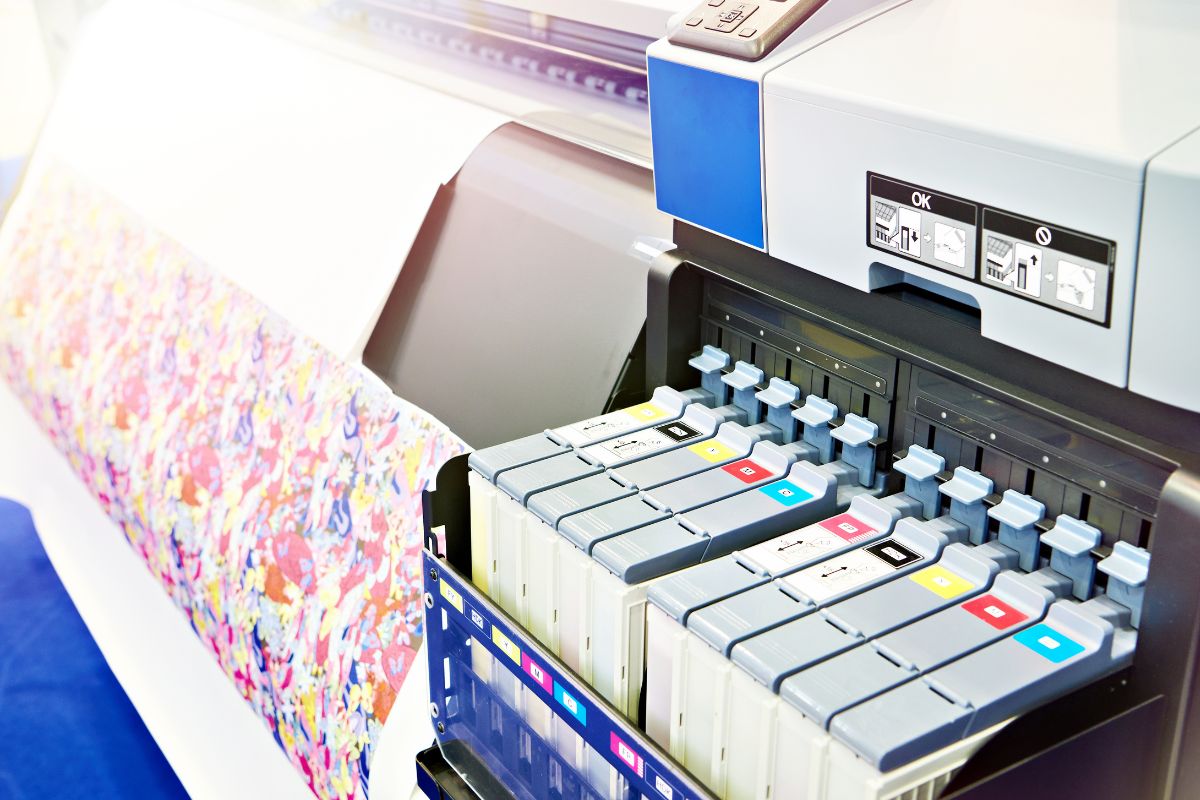
Sublimation printing offers unique advantages for businesses of all sizes. You can create high-quality, customizable products that appeal to various markets, such as décor and signage.
Understanding your options can help you choose the best path for your needs.
Small Business and Home-Based Operations
As a small business owner or someone running a home-based operation, sublimation printing allows you to offer personalized items. You can print on textiles, create custom décor, or produce unique signage without significant investment.
You will need essential equipment like a sublimation printer, heat press, and sublimation ink. A small printer, like the SG1000, is suitable for smaller items such as mugs and t-shirts. This setup lets you cater to niche markets and keep overhead costs low.
Advantages include the ability to create detailed designs that won’t fade or peel. You can easily handle small orders or one-off items, making it easy to adapt to customer requests.
Scaling Production for Large Volume Orders
When your business grows, scaling production becomes vital. For high production needs, consider investing in printers like the Epson F570, capable of larger items.
This printer can handle rolls of paper up to 24 inches wide, making it suitable for banners and larger textile projects.
Investing in a more robust heat press is also essential for efficiency and speed.
Additionally, utilize software that can manage designs and production schedules. This helps streamline processes for bulk orders.
Focus on quality control to ensure every item meets your standards, as this will lead to repeat customers.
Advancements in Sublimation Printing Technology
| Advancement | Benefits |
|---|---|
| High-Resolution Printing (1200+ DPI) | Produces sharper, more detailed images with vibrant colors. |
| Eco-Solvent Sublimation Inks | Environmentally friendly, reduces chemical waste, and improves sustainability. |
| Faster Printing Speeds | Newer printers can print more pages per minute, improving production efficiency. |
| Wide-Format Sublimation Printers | Allows for printing on larger surfaces like banners, curtains, and upholstery. |
| Improved ICC Color Profiling | Ensures more accurate color reproduction for professional-quality prints. |
| Dual-Ink Systems | Enables simultaneous printing of different colors without clogging or switching cartridges. |
| Automatic Maintenance Systems | Reduces manual cleaning and extends printhead lifespan. |
| Smart Connectivity (Wi-Fi, Bluetooth, Cloud Printing) | Enables remote operation and wireless printing from multiple devices. |
| Heat-Free Printing Technology | Reduces power consumption and enhances printer lifespan. |
| 3D Sublimation Printing | Enables printing on curved surfaces like mugs, helmets, and shoes. |
Sublimation printing technology has seen significant improvements. These changes enhance the quality, speed, and accessibility of the process, making it a popular choice for many businesses.
Recent Developments in Sublimation Printers
Recent innovations have made sublimation printers faster and more efficient. Newer models offer print speeds that reduce production time. This is essential for businesses that require quick turnaround times for custom products.
In addition, advancements in ink formulations contribute to high-quality prints. Modern dyes are more vibrant and can produce intricate details. This leads to designs that remain durable and resistant to fading.
Many printers now incorporate user-friendly interfaces, allowing even beginners to create stunning prints.
Future Trends in Sublimation Printing
Looking ahead, personalization will drive the next wave of advancements in sublimation printing. As technology improves, you can expect even greater customization options. This includes intricate designs on various materials, from apparel to home decor.
Furthermore, the integration of smart printing technology is on the rise. Printers may soon feature automated settings for different materials and designs.
These innovations aim to make the sublimation process not only faster but also more adaptable to your needs.
This focus on durable prints and enhanced usability will solidify sublimation’s role in the printing industry.
Comparison with Other Printing Methods
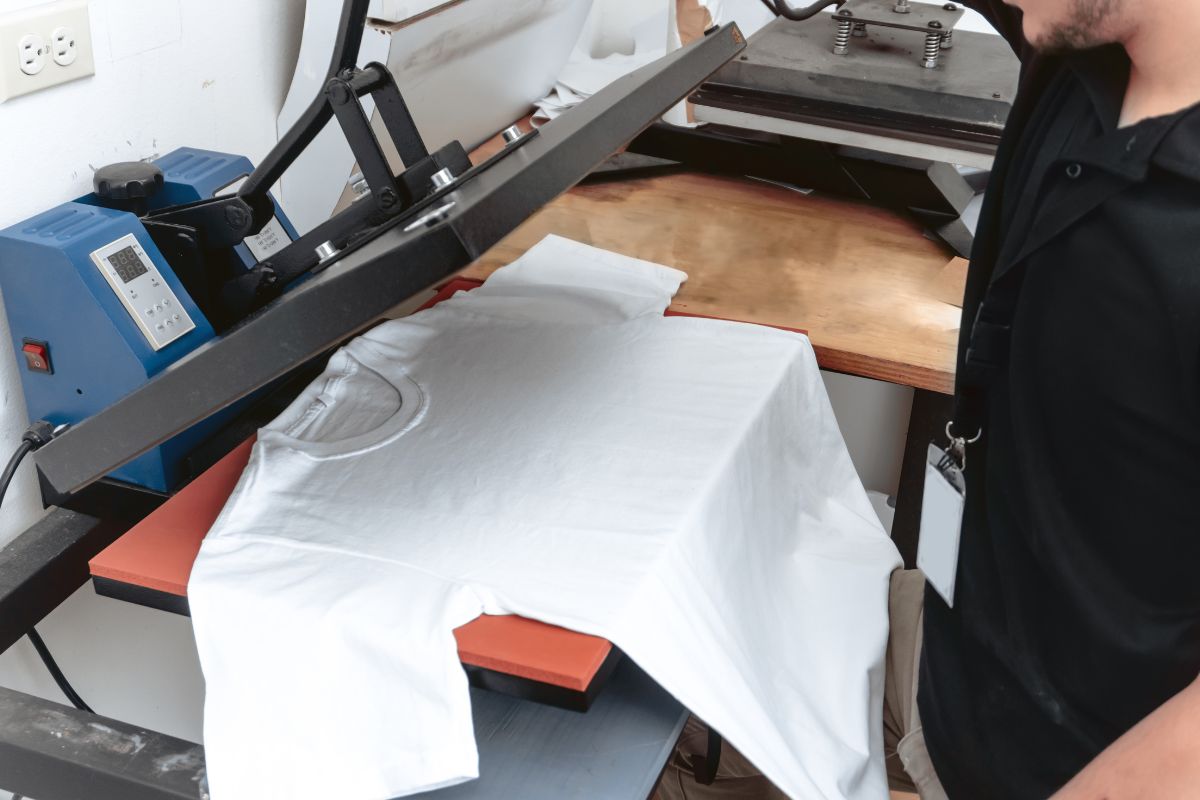
Sublimation printing has its distinct features, which set it apart from other methods such as heat press printing, screen printing, and traditional inkjet printing. Each method has its strengths and weaknesses that can affect your choice based on your printing needs.
Sublimation vs. Heat Press Printing
Sublimation printing uses heat to transfer dye onto materials, particularly polyester fabrics. A heat press is often used as an essential tool for this process. Unlike heat transfer vinyl (HTV) used in standard heat press printing, sublimation inks vaporize and bond with synthetic fibers.
Key Differences:
- Durability: Sublimation produces more durable designs that resist fading and cracking compared to traditional heat press methods.
- Material Compatibility: Heat press printing works on a broader range of materials, including cotton and various fabrics, while sublimation is best suited for polyester and other synthetic materials.
- Color Quality: Sublimation yields vibrant, full-color images that are hard to match with regular heat press methods.
Sublimation vs. Screen Printing
Screen printing involves pushing ink through a mesh screen onto a substrate. This method is suitable for larger batches and can work on various fabrics. In contrast, sublimation is ideal for smaller runs and requires specific materials.
Comparison Points:
- Color Application: Screen printing often uses thicker inks, which can obscure the fabric texture, while sublimation ink blends seamlessly with the fabric.
- Setup Costs: Screen printing typically involves higher setup costs for screens and equipment but can be more cost-effective for bulk orders.
- Print Quality: Sublimation offers finer details and smoother gradients, making it ideal for complex images and designs.
Sublimation vs. Traditional Inkjet Printing
Traditional inkjet printers use liquid inks sprayed onto paper or fabric. Unlike sublimation printers that transfer dye into materials, inkjet prints remain on the surface, which can lead to fading.
Core Differences:
- Ink Type: Sublimation uses special dye, while inkjet printers can use various types of inks, including pigment and dye-based.
- Application: Inkjet printing is more versatile for printing on paper and certain materials but lacks the durability found in sublimated designs.
- Image Longevity: Sublimated images are less likely to wash out compared to those from standard inkjet printing, particularly on fabrics.
These comparisons highlight how sublimation printing fits into the wider landscape of printing methods, helping you make an informed choice based on your specific needs.
Conclusion
A sublimation printer is a great tool for various purposes. Whether you are in crafting or producing promotional items, it offers vibrant and lasting results that stand out.
These printers work best on materials like polyester. Therefore, you can create custom designs on items such as t-shirts, mugs, and bags.
Using a sublimation printer, such as the Epson Workforce, can enhance your projects. This model is known for its reliability and print quality, making it suitable for both home businesses and larger operations.
When considering this printing method, think about your needs. Are you focusing on detailed graphics or quantity? Sublimation is ideal for unique, high-quality prints.
Many users appreciate its ease of use. Once you have your designs ready, the setup is quick, and you can start printing right away.
In addition, sublimation printing is often eco-friendly. The inks used are less harmful compared to other printing methods, which can be a plus for your business.
By choosing sublimation printing, you invest in a versatile and effective solution. Whether for personal projects or business ventures, this technology can help you achieve your creative goals.
Frequently Asked Questions
Sublimation printers are unique tools with specific uses and important features. Understanding how they work and their applications can help you make informed choices.
What are the typical uses for a sublimation printer?
You can use a sublimation printer for various items. Common applications include printing on polyester fabrics, custom clothing, mugs, phone cases, and promotional products. These printers are great for creating vibrant, long-lasting designs.
How do you convert a regular printer to a sublimation printer?
To convert a regular printer to a sublimation printer, you need to replace the ink with sublimation ink. You also must use special sublimation paper. Be aware that not all printers can be converted, so check that your model is compatible.
Can you use a sublimation printer to print on t-shirts, and how is it done?
Yes, you can use a sublimation printer for t-shirts. You print your design onto sublimation paper. Then, using heat and pressure, you transfer the ink onto the polyester fabric, embedding the dye into the fibers for a vibrant finish.
What makes a sublimation printer different from an inkjet printer?
A sublimation printer uses heat to turn solid ink into gas, which then embeds into materials. In contrast, an inkjet printer sprays liquid ink onto the surface. This difference affects durability and how designs appear on fabric and other items.
What should beginners look for when choosing a sublimation printer?
When choosing a sublimation printer, consider size, print quality, and cost. Look for a printer that is compatible with sublimation inks and check reviews for reliability. It’s also helpful to consider the types of items you plan to print.
Why is sublimation printing preferred for certain applications over other methods?
Sublimation printing is preferred because it creates vibrant colors that last. Unlike other methods, sublimation designs won’t crack or peel.
This makes it ideal for items like sportswear and customized gifts where appearance and durability matter.

